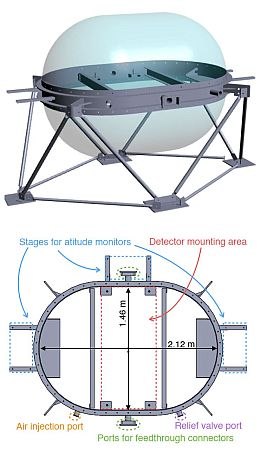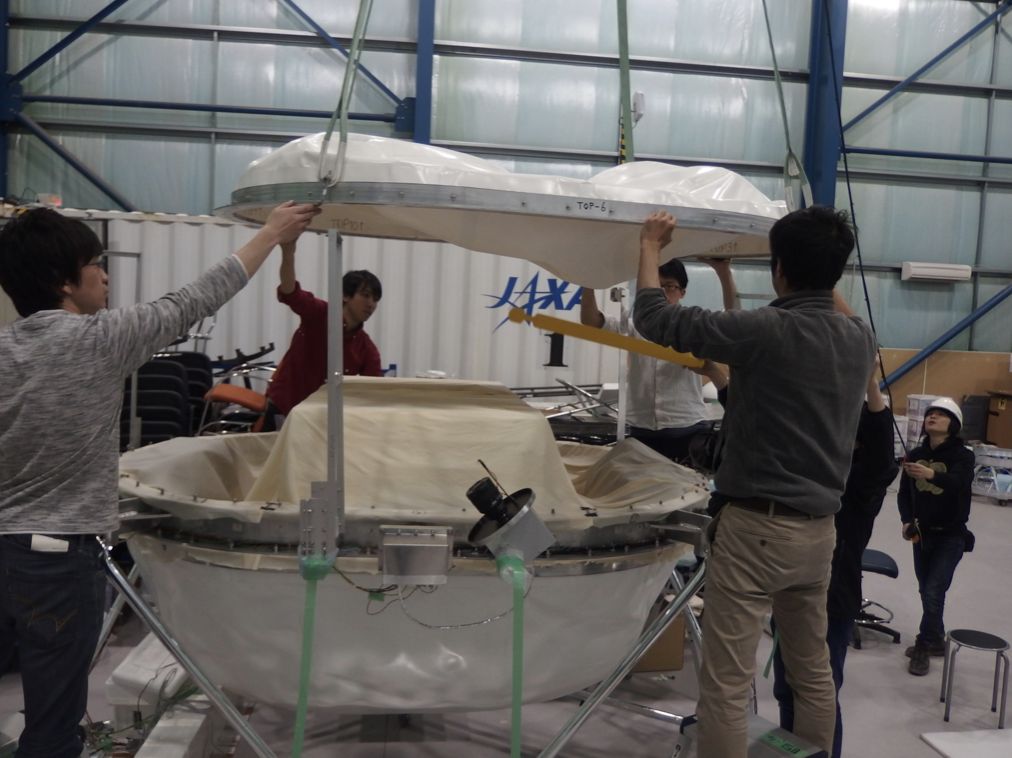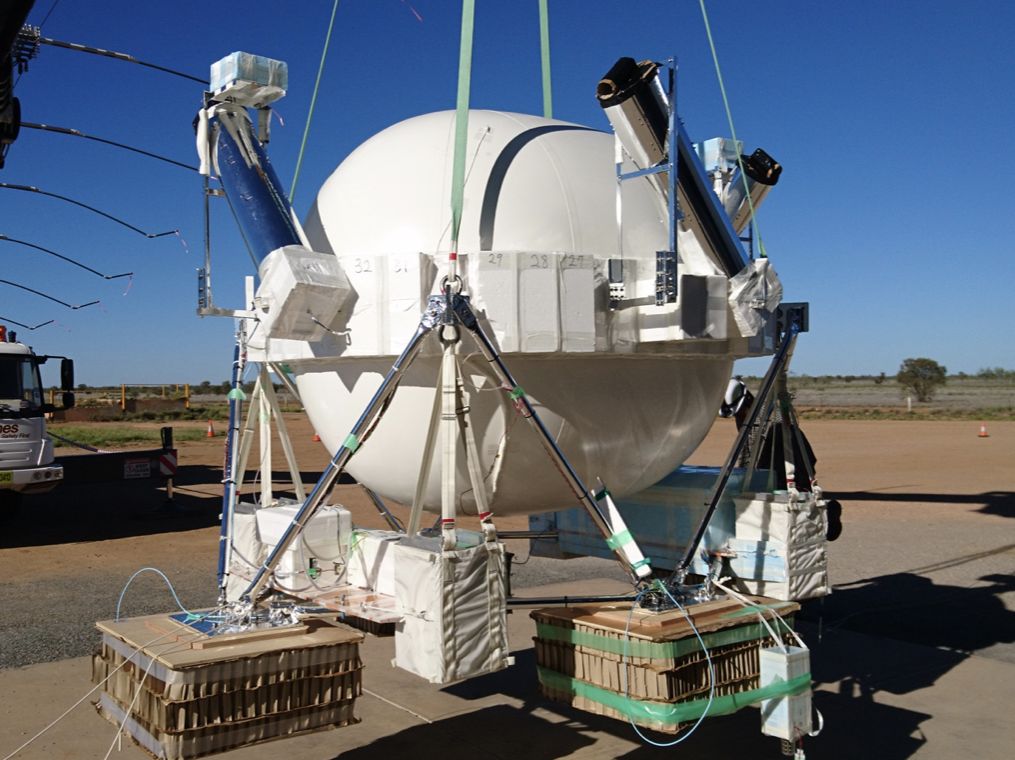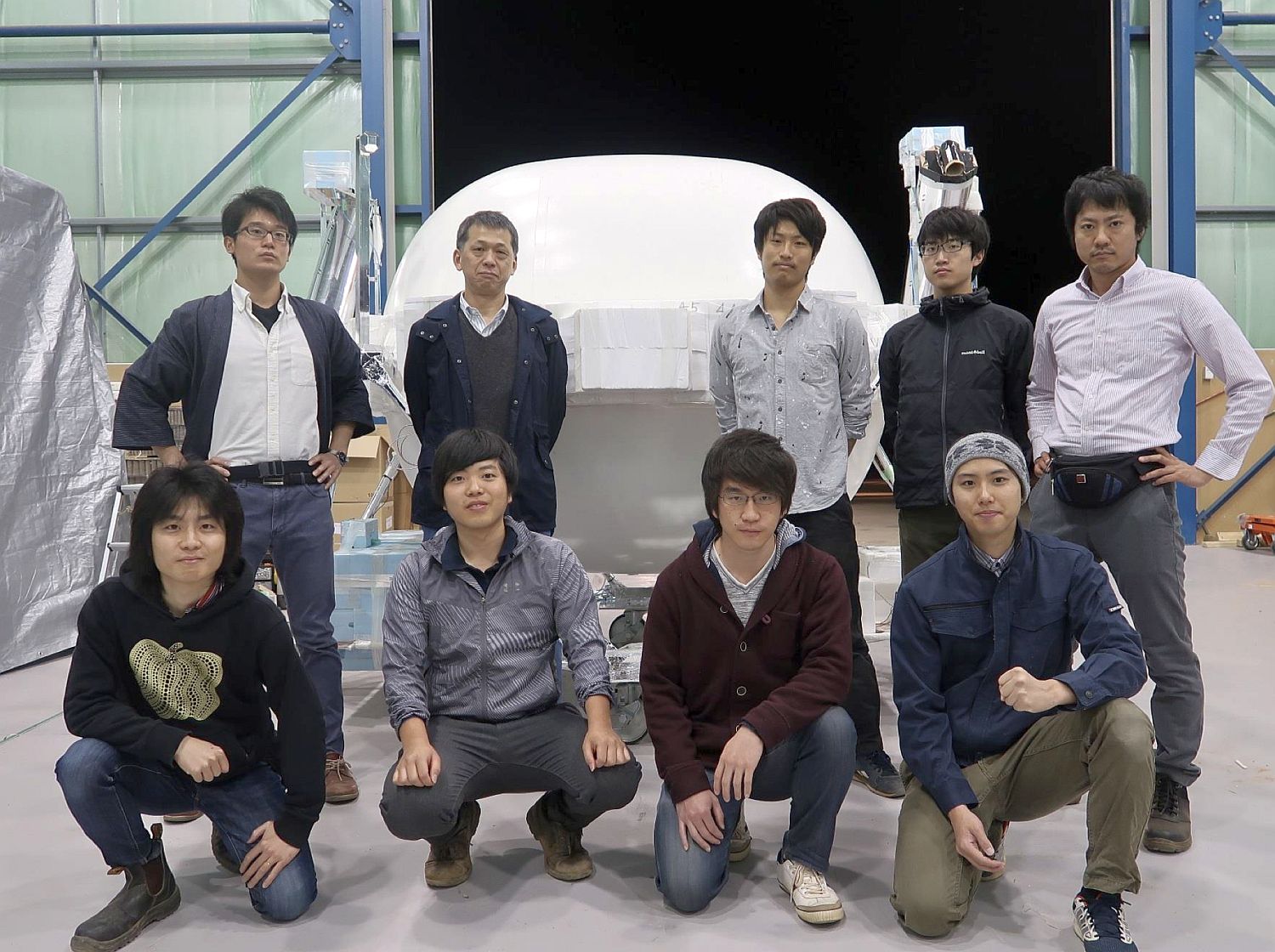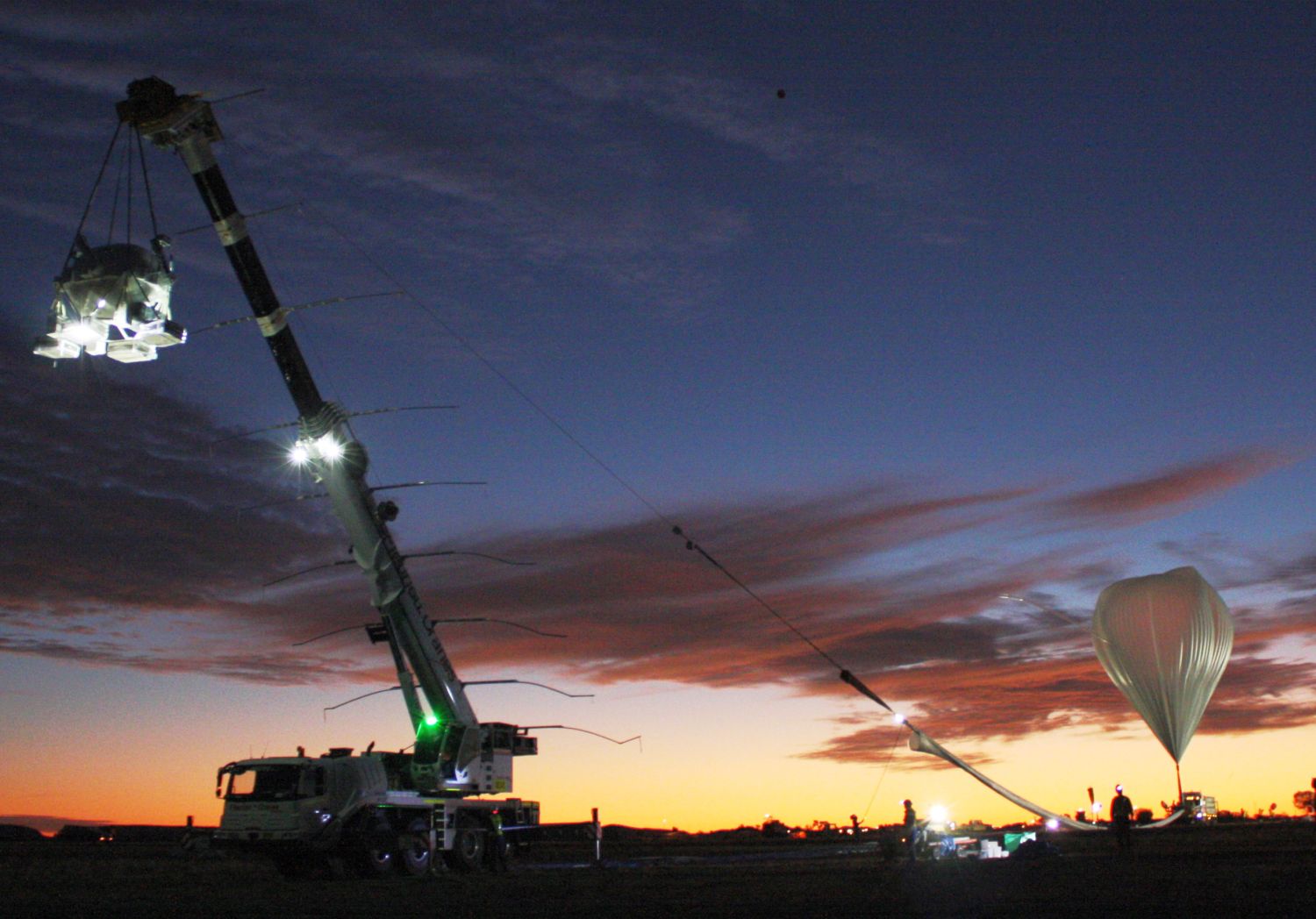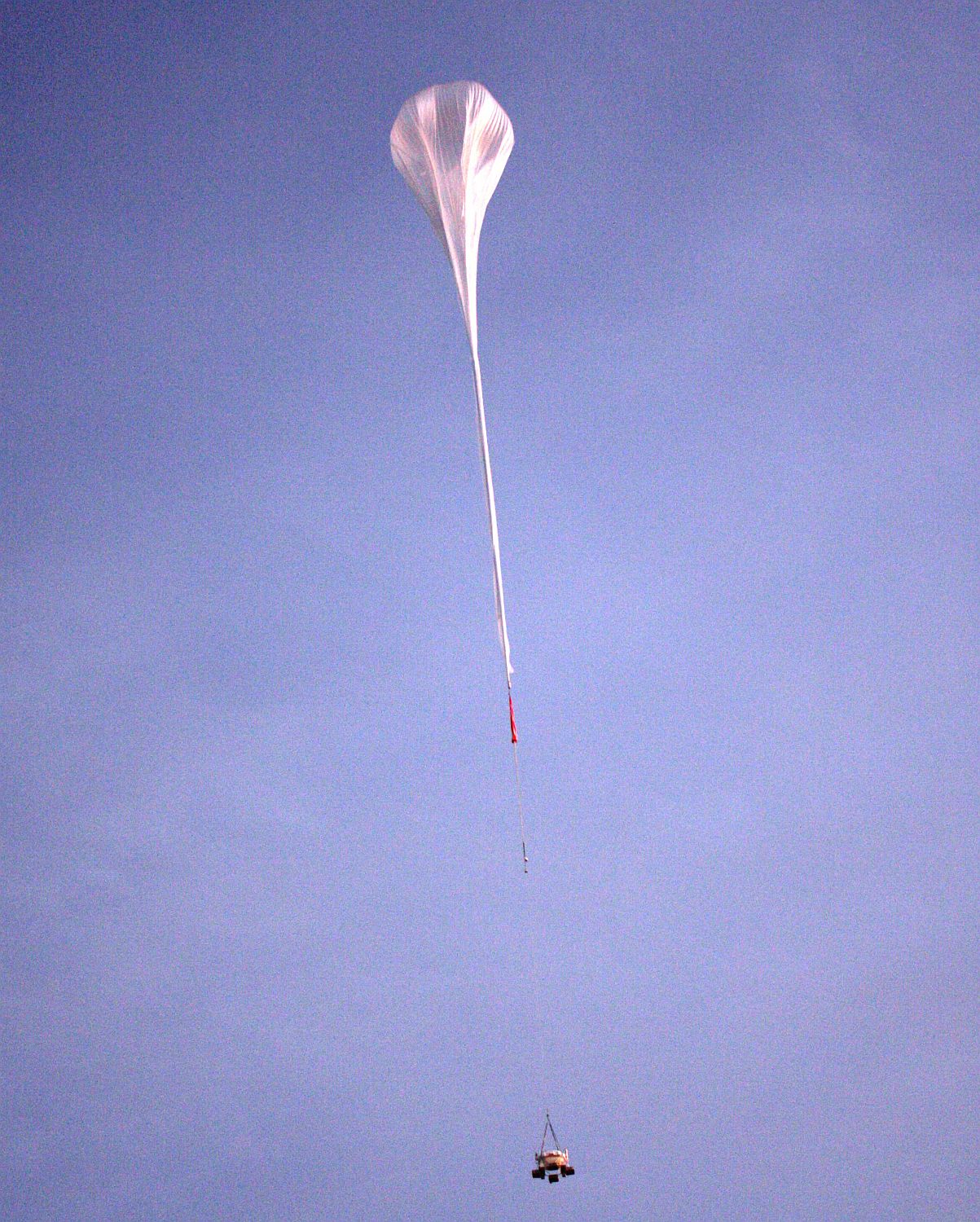Purpose of the flight and payload description
GRAINE is the acronym for Gamma-Ray Astro-Imager with Nuclear Emulsion, is a high-resolution gamma-ray telescope for the observation of cosmic gamma-rays onboard long duration balloon missions. The instruments observes particles in the energy range between 10 MeV and 100 GeV, with emulsion plates that combines high precision, sensibility to the polarization and large-aperture-area. It was developed by an extensive collaboration that includes Kobe University, Nagoya University, Okayama University of science, Aichi University of Education and Gifu University and counts with the fundamental support of the balloon program of the Japan Aerospace Exploration Agency (JAXA).
Basically, the instrument is composed by a converter, a timestamper, a calorimeter and an attitude monitor. The converter consists of an stack of emulsion films (with metal foils) where the beginning of electron pairs are detected. The timestamper is composed by a multi-stage shifter which gives a time resolution below a second to events at the converter. The calorimeter consists of a stack of emulsion films with metal plates that measures high energy particles either by measuring the energy of the electro-magnetic shower or the momentum of electron pair with multiple coulomb scattering. Particles of low energies are measured at the converter by measuring the momentum of electron pair with multiple coulomb scattering.
The attitude monitor consists of a star camera located outside the gondola. By combining the attitude monitor information and the event timing, the gamma-ray direction relative to the celestial sphere could be determined.
For GRAINE 2018, a cylindrical vessel shape was selected in anticipation of future expansion of the detector mounting area. Under the condition of a spherical-shaped vessel, the height of the vessel must be increased if the detector mounting area is expanded. On the contrary with a cylindrical-shaped vessel, the detector mounting area can be expanded by lengthening the straight portion of the rings without changing the height of the vessel. At left we can see a basic scheme of the instrument in the version flown in 2018 including the balloon-style pressure vessel gondola with truss structures, and a schematic of the top view of the main ring. The hemispherical shell is composed of a membrane material, which was fabricated by coating a resin on a base cloth woven with plastic fibers. The advantages of membrane materials over metal are that they can be formed into structures by heat welding, are lightweight, and can be folded.
Details of the balloon flight
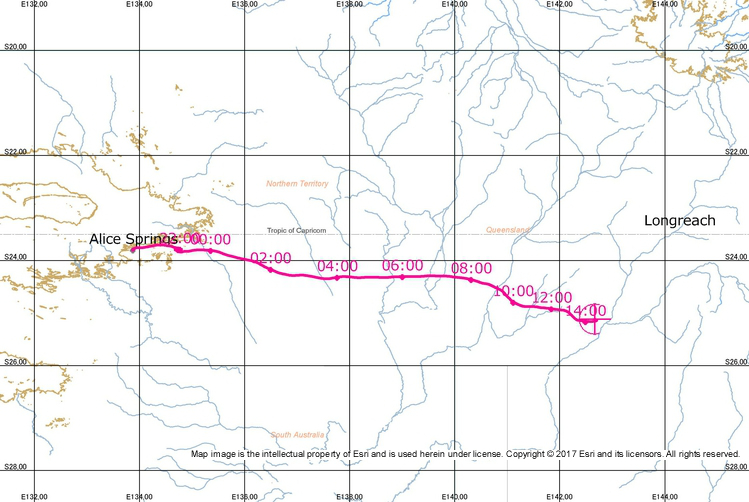
Balloon launched on: 4/26/2018 at 6:03 jst
Launch site: Australian Balloon Launching Station, Alice Springs, Australia
Balloon launched by: Japan Aerospace Exploration Agency (JAXA)
Balloon manufacturer/size/composition: Zero Pressure Balloon model B300 300.000 m3
Flight identification number: B18-03
End of flight (L for landing time, W for last contact, otherwise termination time): 4/26/2018 at 22:47 jst
Balloon flight duration (F: time at float only, otherwise total flight time in d:days / h:hours or m:minutes - ): 16 h 44 m
Landing site: W of Windorah, Queensland, Australia
Payload weight: 450 kgs
The balloon was launched from the Australian Balloon facility in Alice Springs on April 26, 2018 at 06:33 Australian Central Standard Time (ACST). The balloon reached an altitude of 38 km in 2 h and started a levelled flight heading eastward. The emulsion telescope and the three star cameras were operating as desired, and the observation continued until 22:19 ACST. The Vela pulsar crossed the field of view of the telescope for more than 6 h, so the observation was deemed to be successful.
The balloon was separated from the gondola which descended by parachute, at 23:17 ACST; it landed on the ground 250 km southwest of Longreach at 23:54 ACST.
The payload was recovered by a helicopter on the next day, and emulsion films were immediately transported to Sydney. All films were developed and processed at the University of Sydney. All processes were completed by May 13.
This was the third balloon flight of the experiment and was carried out as a demonstration of the detection of the brightest known astronomical gamma-ray source, the Vela pulsar, with an aperture area of 0.38 m2. During the flight several events were detected on which gamma rays were produced by the hadronic interactions of cosmic rays in the detector. These events were used to calibrate the reconstructed angle, energy, and other parameters. The post flight analysis indicated that the performance of the detector for gamma rays was as expected regarding the wide incidence angle and energy ranges.
The first flight aimed to perform scientific observations took place in May 2023, over Australia using a larger area detector.
External references
- GRAINE project home page Kobe University website
- Development of a balloon-style pressure vessel gondola for balloonborne emulsion gamma-ray telescopes Journal of Instrumentation, JINST 14 P09009 (2019)
- First Emulsion Gamma-Ray Telescope Imaging of the Vela Pulsar by the GRAINE 2018 Balloon-borne Experiment The Astrophysical Journal, Volume 960, Number 1, 2024
- GRAINE project, prospects for scientific balloon-borne experiments Adv. Space Res.(2017)
- High-Precision Observation of Cosmic Gamma-ray Sources with the GRAINE Telescope JPS Hot Topics 2, 007 (2022)
- Information about the launch of GRAINE ISAS / JAXA website
- Observation of sub-GeV atmospheric gamma rays on GRAINE 2018 balloon experiment and comparison with HKKM calculation 37th International Cosmic Ray Conference (ICRC 2021)
- Performance of an emulsion telescope for gamma-ray observations in the GRAINE2018 balloon-borne experiment Progress of Theoretical and Experimental Physics, Volume 2021, Issue 12, December 2021, 123H02
- The Highest Resolution Gamma Ray Image Ever Has Been Taken IFL Science
14437If you consider this website interesting or useful, you can help me to keep it up and running with a small donation to cover the operational costs. Just the equivalent of the price of a cup of coffee helps a lot.

